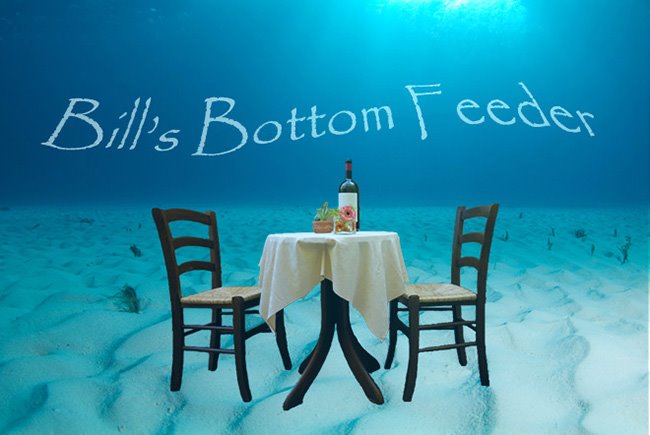As I have related before, I get a bunch of food magazines,
and they run the gamut from….. I don’t know, “popular”? to serious stuff. Like maybe Martha Stewart Living to Art of
Eating. By the way, publications like “Cooking Light” do not find their way to my mailbox. While Martha spends time telling
you how she harvested the cotton, milled it, and wove her own tablecloth and then forged
the silver for the table and so forth, she occasionally does have some
interesting recipes. Art of Eating, at
the other end of the spectrum, goes on about some restaurant on a little island
in the Aegean with three tables that serves (in Edward Behr’s opinion) the best
squid in the world which, while unobtainable to most of us, makes fascinating
reading. Somewhere near the lower end of the spectrum is Cook’s Country, kind of an arm
of Chris Kimball’s Cook’s Illustrated.
It started out life as kind of a celebration of “home cooking” and
contained recipes with sometimes stuff like historical photos of a North Dakota housewife with her recipe for Blueberry Buckle. Over its
relatively short lifetime, it has kind of morphed back to the Cook’s
Illustrated model, featuring novel ways of approaching some dishes.
It always starts off with a page of “ask Cook’s
Country” where people can submit burning culinary questions such as (I am not making
this up): “I have a collection of fancy salts, can I substitute them for Kosher
or table salt in cooking and baking?”
Answer: “yes, basically salt tastes like salt”. Of course then they go on to say that they
tested 234,591 varieties of salt, and found that…basically salt taste like
salt. They did bring up crystal size and
how that might affect using volume measures, so maybe a nugget of knowledge.
Then there’s the requisite page of “tips”, where I learn you can extend the
life of berries by washing them in a solution of one cup of vinegar to three of
water, dry them in a salad spinner, and store in a container with the lid
slightly ajar to let the moisture escape.
You bet, I’m on that..
But what got me with this issue was an article/recipe for
Shrimp Ėtouffée. We all know that’s a
famous New Orleans Cajun and/or Creole dish, and can be made with a variety of
degrees of spiciness, with or without Andouille, etc. However, it seems that this author was more
concerned with “shortcuts” and saving time than making a good dish. The subtitle to the article was: “we wanted to cut down on the work of making….”. Really!
That darn cooking is WORK? She
begins by saying how much she liked the étouffée she had on a trip to New
Orleans, and wanted to recreate it at home (apparently without all that darn
work). She begins by making a traditional
roux, with flour and butter which she “stirred and stirred, and stirred some
more, and a long 20 minutes later had
a rich nutty brown roux”; then she added
the (culinary) Holy Trinity, garlic, and so forth and cooked for “another 10 minutes”; in goes the stock
and then a resentful: “simmered 25 more minutes”; finally
added the shrimp allowing the pot to simmer “a mere 5 minutes longer”, and
got a very good dish. But then: “The étouffée was quite good, but it was taking too long”. (all italics
mine).
Well, then, excuse me… did you have someplace to go? Do you think the New Orleans chefs you
mention in the article (John Besh, Emeril, Paul Prudhomme) thought that? Did they, like you, look for “shortcuts” like
toasting the flour before adding the butter for the roux?. The reason their food tastes so good is because they are willing to take the
time to do things properly even if it
takes much longer. This idea of looking
for ways of “cheating” (my word) to create less work for yourself or save those
precious few minutes is just wrong.
Now, i must add that I have complained about this phenomenon before, and I can just hear a
certain red haired loads engineer I used to work with yelling at me: “you work a full day, get the kids, come
home, and then try to spend two hours creating something for supper and see how
that goes!”. And she does have a point..
there are times when you have to get something on the table, and you don’t want
buckets or sacks, so some shorter recipes for reasonable dishes are helpful. All I will say is that if you want to have a classic
dish once it a while, pick your time and make it the classic way.
And another thing that really bugged me about the article
was the picture of the finished dish. There
were lovely pink shrimp in a gorgeous rich brown sauce, over white (big perfect
separate grains) rice.
BUT, see those “lovely” shrimp have that ugly roll of fat on
either side of the split back? I can’t
stand that. You can’t chew it very well,
it sticks in your teeth, sometimes hangs loose and is just plain ugly. You know what? It takes only just a little time to
remove it, it isn't hard, and makes the dish ever so much more appealing.. But,
it probably adds a maximum of a whopping ten minutes…What? just to improve the looks?… out it
goes!! Next time you get shrimp, see if
it is there. If the shrimp were shelled
and cleaned by hand, I’ll bet it will be removed; if they were frozen from a
bag I’ll bet the will be there. We
deserve better…
In the same issue was a recipe for “Rhode Island Johnnycakes”. News to me.. at least you can cut corners
there I guess. And most likely you don’t
have to
DFD


No comments:
Post a Comment